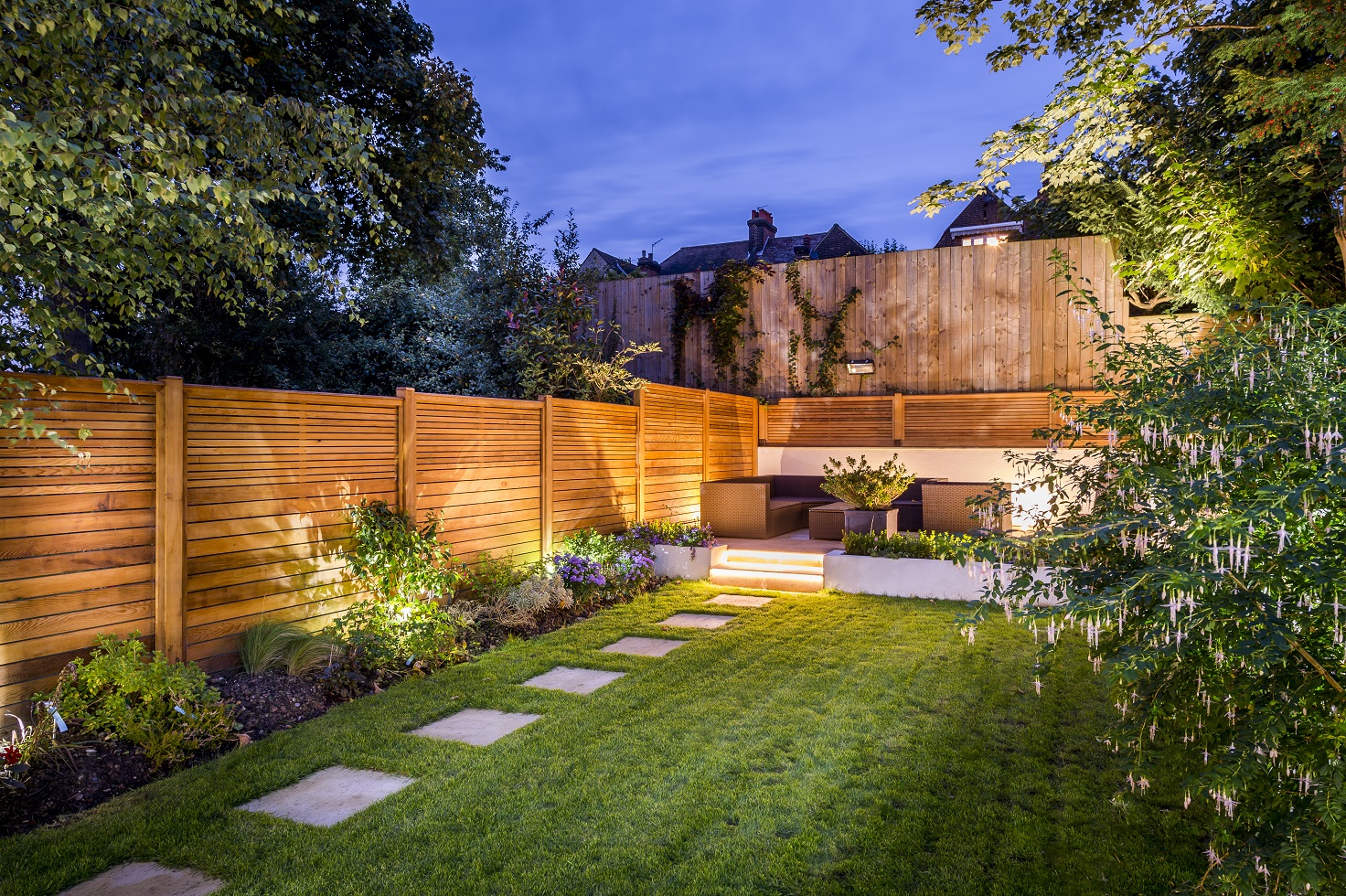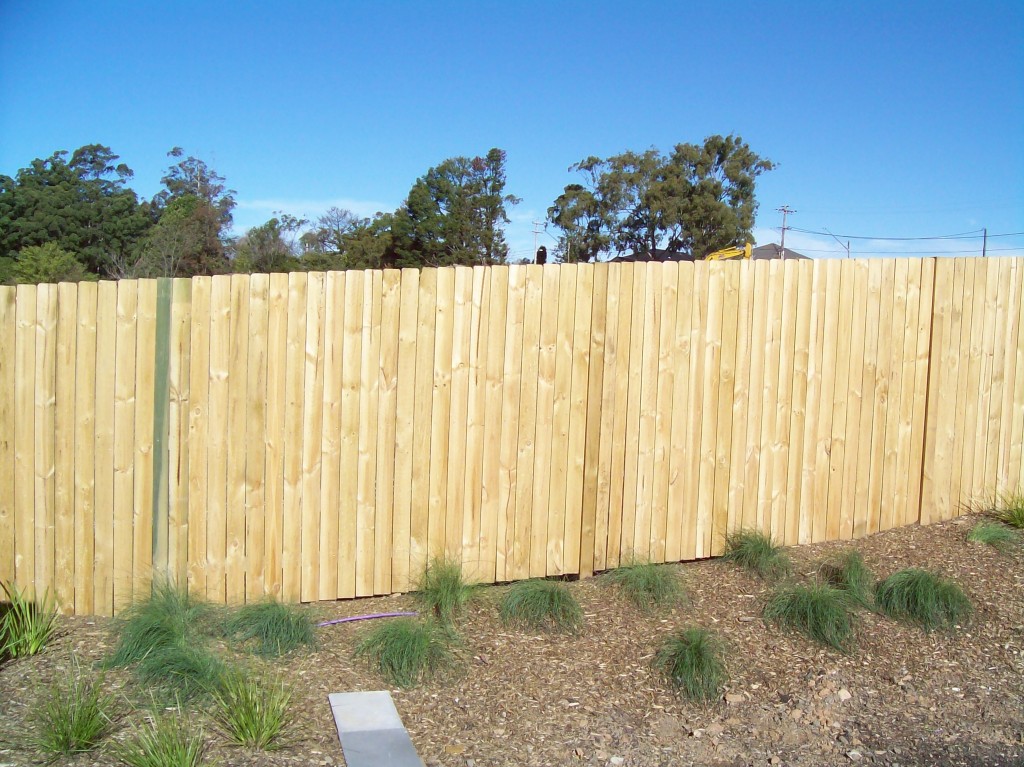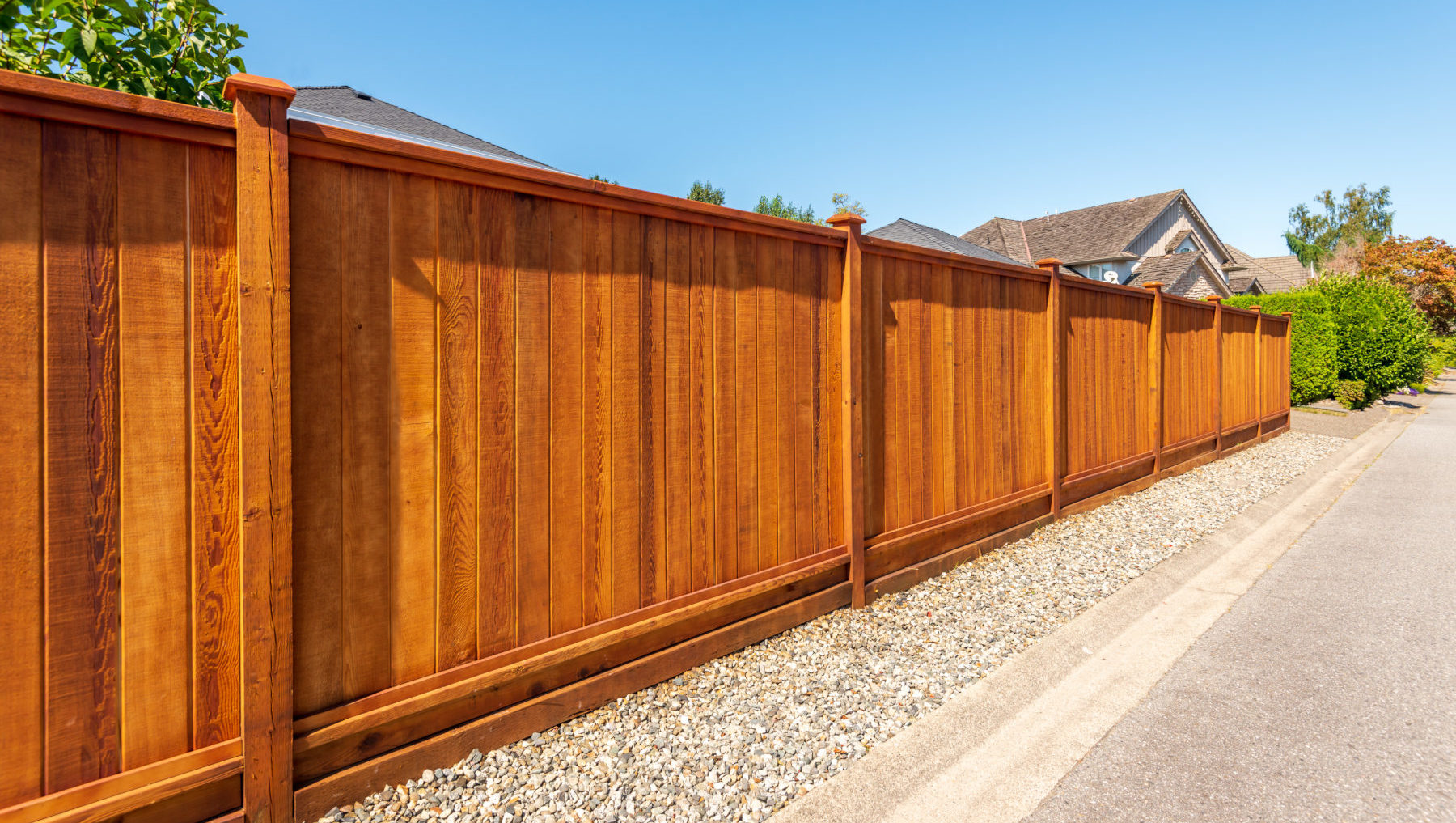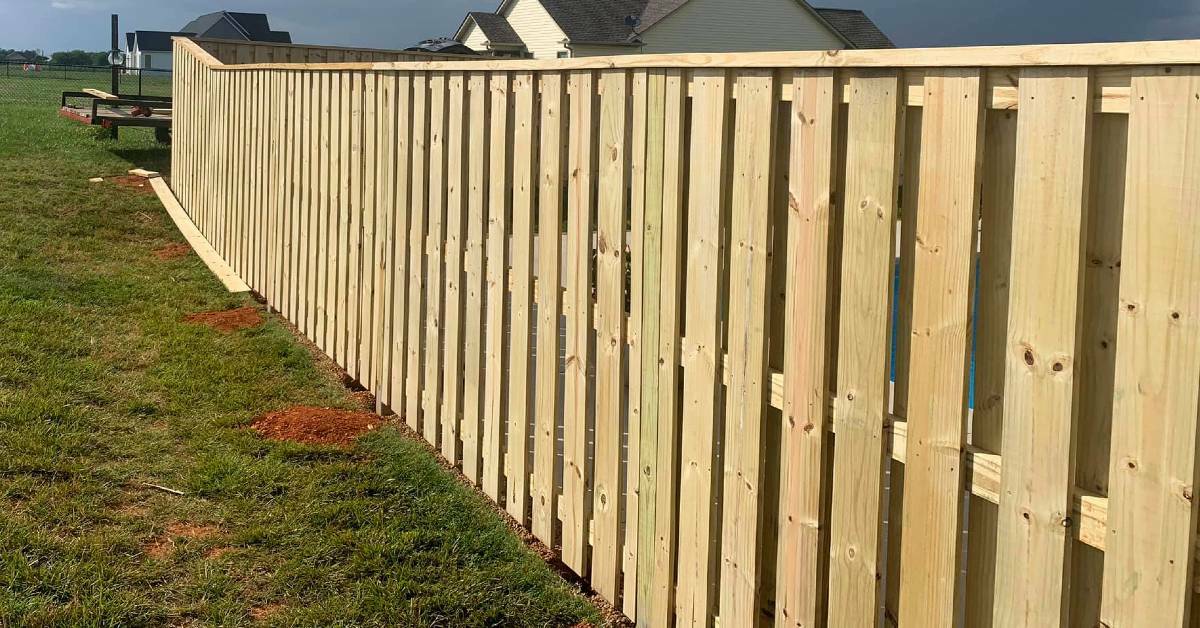Choosing the right type of timber for your home fence is a crucial decision that impacts both the aesthetics and longevity of your property’s boundary. With numerous options available, homeowners often find themselves debating between cedar and pine. Each type of timber offers distinct advantages and potential drawbacks, making the decision more complex than it initially appears.
In today’s blog, we’ll explore the key differences between cedar and pine fences, helping you determine which option might be better suited for your home. Whether you’re prioritizing durability, cost-effectiveness, or visual appeal, understanding the characteristics of these two popular fencing materials is essential.
What is Cedar Fence?

A cedar fence is a type of wooden fencing made from cedar wood, renowned for its natural beauty and durability. Cedar is a popular choice for fencing due to its inherent resistance to rot, decay, and insect damage, which means it can last for many years with minimal maintenance. The wood’s natural oils act as a preservative, protecting it from the elements and reducing the need for chemical treatments. Cedar fences also offer aesthetic appeal with their rich, warm hues and fine grain, which can complement a variety of architectural styles. Additionally, cedar wood is relatively lightweight yet strong, making it easier to handle and install compared to some other types of wood.
What is Pine Fence?

A pine fence is a type of wooden fencing made from pine wood, which is known for its versatility and affordability. Pine is a softwood that is readily available and easy to work with, making it a popular choice for a variety of fencing applications. Typically, pine fences are pressure-treated to enhance their resistance to rot, decay, and insect damage, extending their lifespan and making them more durable for outdoor use.
One of the key advantages of pine fencing is its cost-effectiveness; it provides a budget-friendly option for homeowners looking to achieve a traditional wood fence look without the higher price tag associated with other woods like cedar. Pine fences can also be painted or stained in various colors, allowing for greater customization to match the aesthetic of your home.
Cedar vs. Pine Fence Comparison
1. The Basic Characteristics
Before diving into the differences, it’s essential to understand the basic characteristics of these two types of wood:
- Cedar is a softwood that originates from several different types of cedar trees, including western red cedar and northern white cedar. It’s known for its natural resistance to rot, decay, and insects due to the presence of natural oils within the wood. Cedar has a rich, warm color and a distinctive, pleasant aroma.
- Pine, on the other hand, is another popular softwood that is often pressure-treated to enhance its durability. Pine is known for being budget-friendly, widely available, and versatile. Untreated pine is not as naturally resistant to the elements as cedar, but the pressure treatment process helps it resist rot, decay, and insect damage.
2. Appearance and Aesthetics

One of the most critical factors for homeowners when choosing a fence material is its appearance.
- Cedar Fences: Cedar’s aesthetic appeal is a significant draw for many homeowners. Cedar wood has a beautiful grain pattern and a natural reddish hue that gives it a warm, rustic look. Over time, cedar weathers to a silvery-gray patina, which some homeowners find desirable. Its aroma adds another layer of appeal, enhancing the natural environment around the home.
- Pine Fences: Pine has a lighter, yellowish hue that may not be as striking as cedar, but it provides a neutral and clean appearance that works well with many styles of homes. Pine can be painted or stained to match a homeowner’s preferences, making it a flexible option for various designs. However, unlike cedar, pine requires staining or sealing to preserve its color and prevent premature aging.
Winner: Cedar takes the edge for its natural beauty and distinctive grain patterns. However, if you prefer flexibility in color and want to customize the look of your fence, pine offers greater versatility.
3. Durability and Longevity

Western Red Cedar Fencing
Durability is another significant consideration when choosing a fence material, as you want your investment to last for years.
- Cedar Fences: Cedar is naturally resistant to moisture, rot, decay, and insect damage, meaning it can stand up well to the elements without the need for chemical treatments. This resistance makes cedar fences long-lasting, often enduring 15 to 30 years or more, depending on maintenance and the climate.
- Pine Fences: Pine is softer and more prone to wear and tear compared to cedar. However, most pine fences are pressure-treated to enhance their durability. This treatment helps protect against rot, decay, and insect infestations. Pine fences generally last between 10 and 15 years, but regular maintenance, such as staining and sealing, can extend their lifespan.
Winner: Cedar is the superior option for durability and longevity due to its natural resistance to the elements and minimal need for treatments. Pine, while treated for added protection, has a shorter lifespan and requires more maintenance.
4. Cost and Affordability

Pine fence is the more budget-friendly option
Budget is often a primary factor when selecting fencing material, and both cedar and pine offer different price points.
- Cedar Fences: Cedar tends to be more expensive than pine due to its natural properties and desirable aesthetic. The initial cost of a cedar fence can be significantly higher, particularly if you are using high-grade western red cedar. However, the long-term cost of maintaining a cedar fence is relatively low because it doesn’t require frequent treatments.
- Pine Fences: Pine is the more affordable option upfront. Pressure-treated pine is widely available, and its lower cost makes it a popular choice for homeowners on a budget. The trade-off is that pine requires more maintenance over the years, such as staining and sealing, which can add to the overall cost.
Winner: Pine is the more budget-friendly option in terms of initial cost. However, if you’re looking for long-term value, cedar may be worth the higher upfront investment.
5. Maintenance Requirements
The maintenance requirements of a fence are crucial to its longevity and appearance.
- Cedar Fences: Cedar requires relatively low maintenance compared to pine. Its natural oils and resistance to decay and insects mean that it doesn’t need frequent sealing or staining. However, if you want to maintain its original color, you may need to apply a protective finish periodically. Without treatment, cedar will weather into a silvery-gray color over time, which some homeowners prefer, while others may want to prevent.
- Pine Fences: Pine requires more maintenance to remain in good condition. Because pine is more susceptible to moisture and insects, regular staining, sealing, or painting is necessary to protect the wood from the elements. Failure to maintain a pine fence can lead to cracking, warping, or rotting, reducing its lifespan.
Winner: Cedar wins in terms of lower maintenance, as its natural properties provide better protection against decay and insects. Pine requires more frequent upkeep to keep it in good condition.
6. Environmental Impact
Environmental sustainability is becoming increasingly important to homeowners. Understanding the environmental impact of your fencing material can influence your decision.
- Cedar Fences: Cedar is considered a more eco-friendly option because it is a naturally durable wood that doesn’t require chemical treatments. Many cedar suppliers use sustainable forestry practices, and the wood itself is biodegradable. Cedar also has a smaller carbon footprint because it doesn’t need extensive processing.
- Pine Fences: Pine is a fast-growing species, making it a more renewable resource than cedar. However, pressure-treated pine often contains chemicals like copper and other preservatives that can leach into the soil over time, posing environmental concerns. Some manufacturers are switching to more environmentally friendly treatments, but it is essential to research the specific product you are considering.
Winner: Cedar is generally more environmentally friendly due to its natural resistance to decay without the need for chemical treatments. However, sustainably sourced pine can also be a responsible choice.
7. Climate Considerations
The climate in your area can also influence which material is better suited for your fence.
- Cedar Fences: Cedar performs well in a variety of climates, particularly in regions with high humidity or frequent rainfall. Its resistance to moisture and insects makes it an excellent choice for areas prone to wet conditions. However, in extremely hot or dry climates, cedar may require more frequent maintenance to prevent drying and cracking.
- Pine Fences: Pine, particularly pressure-treated pine, can hold up well in a range of climates, but it is more susceptible to moisture-related issues like warping and rotting if not properly maintained. In humid or rainy regions, pine fences may require more frequent treatment to prevent damage.
Winner: Cedar is generally better suited for a wider range of climates due to its natural resilience against moisture and insects. Pine may require more care in harsh or wet conditions.
8. Resistance to Insects and Rot
Both cedar and pine have varying degrees of resistance to insects and rot, but there are notable differences.
- Cedar Fences: Cedar’s natural oils act as a deterrent to insects, particularly termites, and provide a high level of resistance to rot. This makes cedar a solid choice for areas prone to termite infestations or damp conditions.
- Pine Fences: Pressure-treated pine is treated specifically to resist insects and rot, offering good protection against these threats. However, untreated pine is highly susceptible to damage from insects and moisture, which is why treatment is essential for pine fencing.
Winner: Cedar naturally resists insects and rot without the need for chemical treatments, making it the better option in terms of natural resistance.
9. Installation Process
The ease of installation can vary depending on the type of wood you choose.
- Cedar Fences: Cedar is lighter than pine, which can make it easier to handle during installation. Additionally, cedar’s straight grain makes it less likely to warp or twist during installation, resulting in a smoother process.
- Pine Fences: Pine is heavier than cedar, making it slightly more challenging to work with during installation. Pine also tends to warp and twist more readily, which can complicate the installation process if the boards are not properly treated or maintained.
Winner: Cedar is generally easier to install due to its lighter weight and resistance to warping.
Conclusion: Which Fence Is Better for Your Home?
Ultimately, the decision between cedar and pine fencing comes down to your priorities as a homeowner.
- Choose Cedar If: You value natural beauty, longevity, and minimal maintenance. Cedar’s rich aesthetic, durability, and natural resistance to decay and insects make it a premium choice for those willing to invest more upfront for long-term benefits. Cedar is especially ideal if you live in a humid or wet climate where resistance to moisture is critical.
- Choose Pine If: You are looking for a cost-effective fencing solution and are willing to perform regular maintenance. Pine is a versatile, budget-friendly option that can be customized with paint or stain to match your home’s style. If you live in a drier climate or are looking for a shorter-term fencing solution, pine may be the better fit.
In the end, both cedar and pine offer distinct advantages and can be excellent choices for your home, depending on your budget, aesthetic preferences, and long-term goals. By weighing these factors, you can select the fence material that best meets your needs and enhances your property.
If you’re still unsure whether cedar or pine is the right choice for your home, don’t hesitate to contact us. Our fencing experts are ready to provide a consultation for you.





